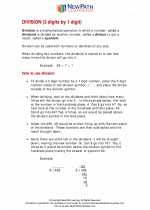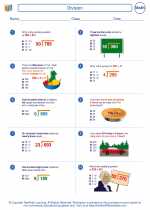Forecasting Study Guide
What is Forecasting?
Forecasting is the process of making predictions or estimations about future events based on past and present data. It is widely used in various fields such as economics, business, finance, and weather predictions.
Types of Forecasting
There are several types of forecasting techniques, including:
- Qualitative Forecasting: This method relies on expert opinions, market research, and surveys to make predictions.
- Time Series Analysis: This technique involves analyzing historical data to make future predictions based on patterns and trends.
- Causal Models: These models establish cause-and-effect relationships between variables to forecast future outcomes.
- Simulation: Simulation forecasting uses computer models to replicate real-world scenarios and predict outcomes.
Steps in Forecasting
The general steps involved in the forecasting process are as follows:
- Data Collection: Gather relevant historical data and other information necessary for analysis.
- Data Analysis: Use statistical methods and tools to analyze the data and identify patterns or relationships.
- Model Selection: Choose an appropriate forecasting model based on the nature of the data and the type of prediction required.
- Model Validation: Validate the selected model by testing its accuracy and reliability using additional data.
- Forecast Generation: Use the validated model to generate forecasts for future events or trends.
- Monitoring and Updating: Continuously monitor the forecasted outcomes and update the models as new data becomes available.
Applications of Forecasting
Forecasting has numerous applications in various fields, including:
- Economic Forecasting
- Inventory Management
- Financial Planning
- Supply Chain Management
- Weather Forecasting
- Sales and Demand Forecasting
- Healthcare Resource Planning
Key Concepts
When studying forecasting, it's important to understand the following key concepts:
- Accuracy: The degree of closeness between the forecasted values and the actual outcomes.
- Forecast Horizon: The time period for which the forecast is made (e.g., short-term, medium-term, long-term).
- Seasonality: Regular and predictable patterns that occur at specific intervals, such as daily, weekly, or annually.
- Trend Analysis: Identifying and predicting long-term movements or changes in data over time.
Study Tips
Here are some tips for studying forecasting effectively:
- Understand the different types of forecasting techniques and when to apply them.
- Practice working with historical data and using statistical tools for analysis.
- Learn how to interpret and evaluate forecast accuracy and reliability.
- Stay updated on current trends and developments in forecasting methods and technologies.
- Apply forecasting concepts to real-world scenarios to reinforce your understanding.
By mastering the concepts and techniques of forecasting, you can make informed predictions and decisions in various professional and personal contexts.
.◂Math Worksheets and Study Guides Sixth Grade. Division
Study Guide Division
Division  Worksheet/Answer key
Worksheet/Answer key Division
Division  Worksheet/Answer key
Worksheet/Answer key Division
Division  Worksheet/Answer key
Worksheet/Answer key Division
Division 

 Worksheet/Answer key
Worksheet/Answer key
 Worksheet/Answer key
Worksheet/Answer key
 Worksheet/Answer key
Worksheet/Answer key

The resources above cover the following skills:
Connections to the Grade 6 Focal Points (NCTM)
Number and Operations: Students' work in dividing fractions shows them that they can express the result of dividing two whole numbers as a fraction (viewed as parts of a whole). Students then extend their work in grade 5 with division of whole numbers to give mixed number and decimal solutions to division problems with whole numbers. They recognize that ratio tables not only derive from rows in the multiplication table but also connect with equivalent fractions. Students distinguish multiplicative comparisons from additive comparisons.